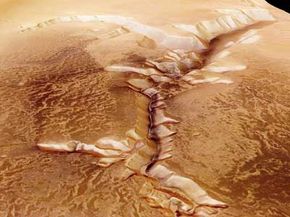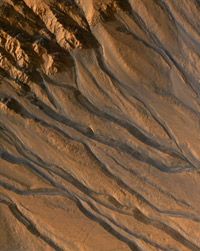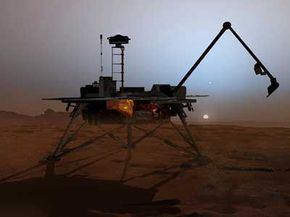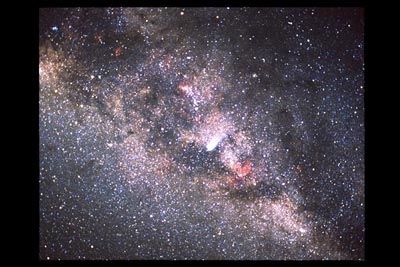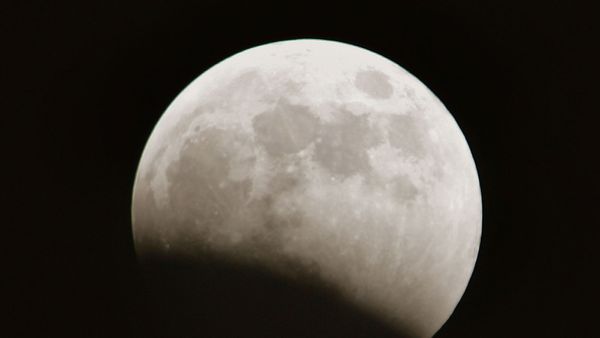For many earthlings, 2008 was a year of too much or too little water. While droughts and floods on this planet kept many people occupied, others had their eyes on the weather forecast millions of miles away, as the Phoenix Mars Lander touched down on our sister planet.
In the 1800s, human imaginations ran wild as astronomers glimpsed what they took to be canals on the Martian surface. Scientists pondered the possibility of life on the red planet, while artists and dreamers such as H.G. Wells took the notion even further, imagining a Martian conquest of Earth in his 1898 book "War of the Worlds." As the decades rolled by, scientific discoveries subdued our expectations, but the questions remained: Has Mars ever supported life, and could it ever support human colonies? Both scenarios depend on liquid water.
Advertisement
In 2005, after 14 successful missions to Mars, these questions were still prevalent when NASA launched the Mars Reconnaissance Orbiter into space. But when scientists compared high-resolution 3-D images of Mars taken by the orbiter to images from 1999, they noticed something unusual. A series of bright, depository streaks had formed in gullies during the intervening years. Since flash floods can carve away soil and leave behind new sediments on Earth, some observers thought they finally had strong evidence that liquid water, and therefore the potential for life, existed on Mars.
